Home > Nursery tree production > Root system > Propagating quality liners > Sliving roots when shifting
Slicing roots when shifting from containers
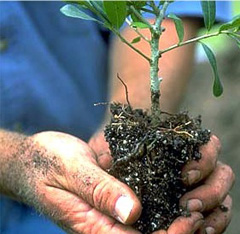
Young liner showing straight roots originating from the stem; no root defects.
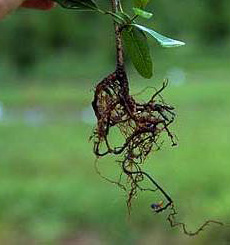
Young liner with roots defects. Deflected roots should be cut at the point where they begin to turn. Some trees may die from this treatment.
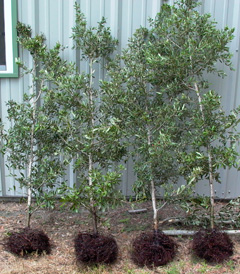
Two years later, the trees shown above filled out the #3 containers. See root close-up in the photos below.

If the root defect shown on the liner (second photo from the top) is not removed, the defect was more pronounced two years later as shown here. Although this should have been cut when the liner was planted into the #3 container, this circling root can be cut now to prevent it from girdling the trunk. Cut the root before it makes a turn so new roots grow away from trunk. The root is shown with a cut that is too far from the initial turn in the root which is toward the left side of the photo.
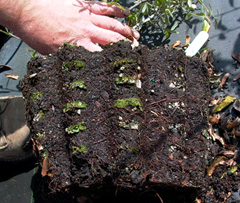
Side of the root ball shows some small diameter roots circling the #3 container. We either sliced the root ball periphery from top to bottom in 6 places or not. Although this improved riit ball quality, we now know that the best method of doing this is to remove about one inch of the root ball periphery.
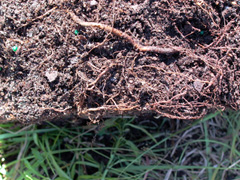
A look at the top of the root ball shows small diameter roots circling around the edge of the container. These must be cut now to produce quality trees.
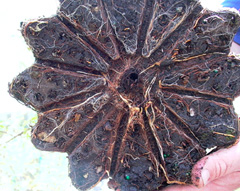
Roots are circling the bottom of the #3 container. These must be removed now to produce quality trees. Use a shovel to slice off the bottom inch of the root ball.
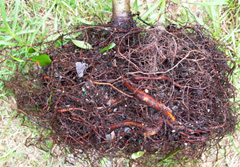
Washing media away showed roots circling around the containers. These must be cut now to produce quality trees. The best method is to shave off the periphery one inch before potting to the next size.

Roots on 45 finished trees in #45 containers were washed out. A better root system with fewer circling roots was produced when root balls were sliced as #3s were potted into #15 containers and then again when #15s were potted into #45 containers.
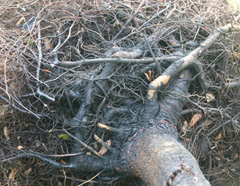
Root balls that were not sliced had large roots circling the trunk. These were the same small roots that were circling the #3 container two years ago; the small roots grew into these large root defects.
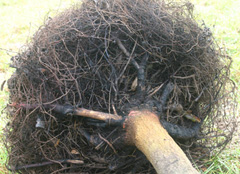
Roots balls that were sliced top-to-bottom along the sides in 6 places had fewer circling roots than those not sliced (compare with photo directly above). However, we now know that this is not enough and that removing the entire outer surface of the root ball (i.e., shaving) results in the least amount of defects (See: Removing entire outer surface).

